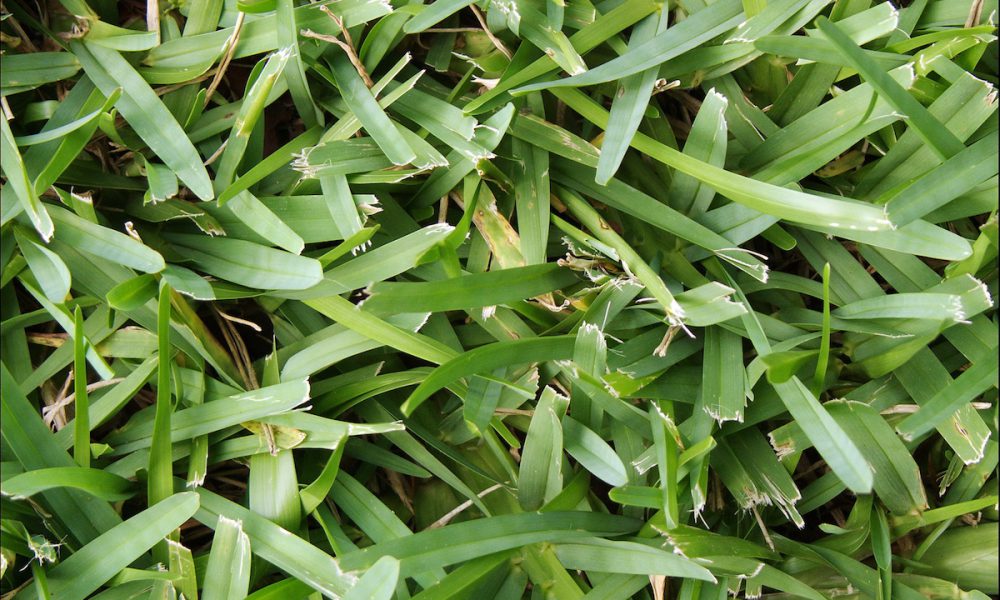
“St. Augustine grass is one of the most popular lawn grasses in Georgia and the Gulf states, thanks to its tolerance of heat and humidity. Its blue-green blades form a dense turf that establishes quickly and easily, and can tolerate salt, making it an excellent choice for coastal yards. An easy way to start a St. Augustine lawn is to plant plugs of established grass. The plugs, which are rooted pieces of sod, gradually fill in the spaces between them, producing a full, beautiful lawn,” reports Scotts.
St. Augustine grass is a warm-season lawn grass that is popular for cultivation in tropical and subtropical regions. It is a medium- to high-maintenance grass that forms a thick, carpetlike sod, crowding out most weeds and other grasses.
Description
St. Augustine is a coarse, broad-leafed grass, which has a lower cold tolerance than other warm season grasses and is not often found as far north as Atlanta. It is ideal for areas along the South Georgia coast, and fares well in lawns that receive partial shade because it performs best in moist soil.
Type: Warm season grass
Sun Exposure: Full sun to partial shade
Uses
St. Augustine grass is specifically planned for beautiful, durable grass residential lawns. It is adapted to moist, coastal areas with mild winter temperatures. It is known to be tolerant of high summer temperatures, and St. Augustine grass retains its color at temperatures as much as 10° lower than those which discolor bermudagrass.
Benefits
There are many benefits to planting St. Augustine Grass:
- tolerates moderate shade, being as good or better than other warm season grasses for shaded sites.
- tolerates a wide range of soil types
- grows satisfactorily at a pH range from 5.0 to 8.5
- highly tolerant of soil salinity, producing satisfactory growth
- produces satisfactory turf at moderate levels of maintenance, effectively competes with weeds and other grasses and has only a few serious pests
- as temperatures cool, St. Augustine grass maintains its dark green color
Drawback
St. Augustine grass does not tolerate compacted or waterlogged soil conditions.
Steps for Healthy Lawn
There are several steps to consider when wanting to achieve a healthy and beautiful law:
- Lawn Analysis.
- Aerate your Lawn.
- Seeding.
- Optimal Fertilizing, Weed, Insect and Disease Control.
- Proper Watering.
- Cutting the Correct Height.
If you are not familiar with St. Augustine grass, it is in your best interest to make sure you talk with or hire a Lawn Care Service that is knowledgeable in this area to know fertilization schedules, over-seeding management techniques, utilization of intense mowing schedules for shorter mowing heights than most lawns, accurate irrigation and drying procedures.
Contact Us
Choose Proactive Pest Control for professional, comprehensive, guaranteed pest and lawn management. The pros at Proactive will work diligently to gain your trust, confidence, and your total satisfaction. CALL US TODAY at 770-800-PEST to schedule a free, no obligation inspection and evaluation for your home or business. Or, contact us for a FREE consultation. Let us show you why Proactive Pest Control is northeast Georgia’s first choice for pest, termite, and lawn services.